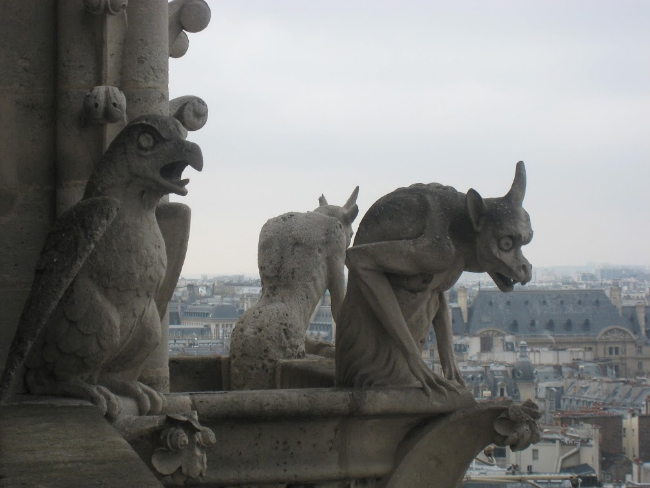

In a report of 1845 they argued for the restitution of gargoyles, together with flying buttresses, roofs, terraces and much else. A competition for the building's rescue was announced in 1842 and won in 1843 by Jean-Baptiste-Antoine Lassus and Eugene-Emmanuel Viollet-le-Duc.


One of the most vociferous voices demanding such a programme was that of Victor Marie Hugo (whose Quasimodo, the deformed bell-ringer in his 1831 work, Notre Dame de Paris, was almost gargoyle-like). When the building became a Temple of Reason further damage was done but, curiously, it was the fact that, in 1789, church property was expropriated by the State that eventually saved Notre Dame: the State was obliged to intervene from the time of the July Monarchy (1830-48) to carry out major restoration works on the Métropole (as it was called) because it was falling to bits. During the most violent period of the Revolution (when Taliban-like destroyers gave themselves freedom to wreck anything of which they disapproved), all signs of féodalité (feudalism) were ruthlessly excised, and that meant hacking away almost all the jamb figures of the facade as well as removing 28 colossal statues of the Gallery of Kings in two orgies of destruction starting in 1793. This last work of vandalism, involving the removal of several medieval sculptures, was carried out in 1771 under Jacques-Germain Soufflot (known best for the great neo-Classical church of Sainte-Geneviève, converted into the Panthéon in the 1790s) to permit the royal canopy of Louis XV's processions to enter and leave the building. A daguerreotype image of the west front, taken by Vincent Chevalier circa 1839, shows a rather sad blancmange of a building, with badly eroded stonework, blocked windows, niches denuded of statuary, and a central main portal with an arch instead of a lintel. The cathedral-church of Notre Dame, Paris, is familiar to many people, but what stands today is really a 19th-century creation (including the tall and elegant fleche over the crossing). Michael Camille was professor of art history at the University of Chicago: this extraordinary, comprehensively illustrated and cogently argued book is his last opus, completed just before his death in 2002.


 0 kommentar(er)
0 kommentar(er)
